- Home
- V. S. Naipaul
Beyond Belief: Islamic Excursions Among the Converted Peoples Page 7
Beyond Belief: Islamic Excursions Among the Converted Peoples Read online
Page 7
He talked of the conversion of Mr. Khalid in a down-to-earth missionary way. He appeared to have no other idea of the wonder of the occasion, no idea of the extraordinary movements of peoples which that conversion could be said to contain. Imaduddin had spent years in the United States. He would have known that there were many states in the American union. He could have found out that Oklahoma was a comparatively new state, and that it had been created by the overwhelming movement westwards over Indian territory late in the nineteenth century. This would have been at the time of similar expansionist movements in Argentina, Africa, Asia: at the time, in fact, when the Dutch, in their grinding-down way, were waging a long war in Aceh in Sumatra; and when, perhaps, Imaduddin’s muezzin grandfather was calling the faithful to prayer in neighboring Landkat.
The conversion in the Menteng mosque of a young man from Oklahoma was full of historical linkages and ironies. But to see them required another vision of the world. Imaduddin’s missionary worldview was simpler. Everyone was born a Muslim, without sin, he had said at the conversion ceremony. What followed from this—though Imaduddin didn’t say it—was that everyone in the world outside Islam was in a state of error, and perhaps not quite real until he found his Muslim self.
Imaduddin’s father, the mufti’s favorite, had had his higher education in Mecca and then at al-Azhar in Cairo, always in a little bubble of Islamic learning, spiritually always insulated from the cataclysms of the time. Imaduddin had traveled far beyond Mecca and Cairo, to the world outside; and he had not gone for religious learning. He had gone for the technical and scientific knowledge that was to be his livelihood, and later for rest and security and asylum after things had become too dangerous for him at home. Yet spiritually Imaduddin lived in the bubble in which his father had lived. Nothing in Imaduddin’s worldview acknowledged the implications of the asylum and law and learning he had traveled to find. The outside world seemed to be simply there, neutral territory, something “found,” open to all, to be used as required.
So Imaduddin might in 1980 use his Saudi grant not to go to a Muslim country, but to the United States, to the University of Iowa, benefiting later from a kind of asylum. He might while he was there be given a vision of the high Islamic destiny of the Malay-speaking Muslims by the Pakistani fundamentalist fanatic Fazel-ur-Rehman, himself enjoying, bizarrely, academic freedom at the University of Chicago, and sleeping safe and sound every night, protected by laws, and far away from the mischief he was wishing on his countrymen at home. This kind of freedom and protection was what a Muslim persecuted at home could look for in the neutral world outside Islam, and Imaduddin appeared to see no anomaly. In his world-view—in spite of the mementos of foreign lands in his cool, low sitting room—nothing seemed owed to the world outside Islam.
He said, with one of the analogies that came to him easily as preacher and scientist, “The Koran is a value system. It’s like a car. A car is a system. If you have only the tire and the wheel you don’t have a car. Islam is a system. You have to have it all. Or you leave it. You cannot be halfway Muslim or third-way Muslim. You become a Muslim wholeheartedly or not at all.”
Nothing therefore affected the faith; every kind of new learning could be made to serve the faith. When he came back from the United States in 1986 with his second degree he could, as he said, use the techniques of power system analysis for his Islamic mental training classes. And now that the faith was the faith of the government, the faith in Indonesia had special political needs.
It had, for example, to deal with Mr. Wahid, with his thirty million pesantren Muslim followers. And while Adi Sasono lay about Mr. Wahid with modern-sounding words like “elitism” and “religious feudalism,” Imaduddin could use the technological needs of the age (and his own technical training) to beat poor old Mr. Wahid—and his “deschooling”—deeper into the ground. Imaduddin never mentioned Mr. Wahid by name to me (just as Mr. Wahid, when he had talked to me, had never taken Imaduddin’s name). But it was clear who was in Imaduddin’s sights when he repeated in his house what he had said in his office, that the whole purpose of the creation was to make the whole earth prosperous.
He said, “It’s written in the Koran. When Adam was created the first knowledge given to him by God is science.”
So when he went to Iowa he was serving the faith. When he came back and attached himself to Habibie and the N-250 he was serving the faith.
He said, “The politicians will have to understand that—because of that plane—we are gaining our position with science and technology.”
He made politicians—poor Mr. Wahid!—sound like people who were not rightful rulers.
It was the perfection of the “value system” of his Islam. It was curiously circular. It was—adapting his preacher’s analogy—like a very smooth and easy treadmill, rather than a car: it kept him busy and went nowhere. Even if you said to him that people in Iowa had been kind to him when he was in need, he was prompted to say nothing about the people. Their kindness was simply another tribute to his faith: God, he said, loved him very much.
Near the end of our talk that Sunday morning I asked him again about his outspokenness in the late 1970s and his troubles then with the government.
He said, expanding on what he had learnt in jail in 1978 and 1979 from the former foreign minister, Subandrio, “Never criticize Suharto. He’s a Javanese. Young people shouldn’t criticize older people, especially big people.” For Imaduddin—not so young in 1977: forty-six to President Suharto’s fifty-six—this went against the grain. “I was trained in the Dutch way and then in the American way, where criticism is O.K. And I was born in Sumatra: I can argue with my father. I had to learn the Javanese way.”
The Sumatran way, which came naturally to Imaduddin, was the forthright, religious way, the fundamentalist way. For Imaduddin it had historically been a source of Sumatran strength.
He had told me earlier, “The Dutch when they came could conquer Java relatively easily, but they couldn’t conquer Aceh and Sulawesi because the people were very religious.”
Mr. Wahid had spoken of the new steamship travel that had from the thirties of the nineteenth century made Mecca more accessible for pilgrimage and study. Out of this there had developed, in colonized Java, the new Islamic village schools, like the one run by Mr. Wahid’s grandfather.
In the independent kingdoms or sultanates of Sumatra, however, the effect of these journeys to Mecca had been more violent. Just as one hundred and fifty or sixty years later colonial students, often the first in their families to travel abroad for university degrees, were to go back home with borrowed ideas of revolution; so these Sumatran students and pilgrims in Mecca, influenced by Wahabi fundamentalism, and a little vain of their new knowledge, were to go back home determined to make the faith in Sumatra equal to the Wahabi faith in Mecca. They were determined to erase local errors, all the customs and ceremonies and earth reverences that carried the taint of the religions that had gone before: animism, Hinduism, Buddhism. There had followed religious wars for much of the century; it was what had drawn the Dutch in, at first to mediate or assist, and then to rule.
This was the missionary faith that Imaduddin had inherited. Java, rather than Sumatra, was rich in the monuments of the pagan past. But nothing outside or before the faith was to be acknowledged, not even a great Buddhist monument like Borobudur, one of the wonders of the world. One of Imaduddin’s criticisms of the government in 1979 was that the Indonesian embassy in Canberra looked like a Hindu building. As for Borobudur, that was for the international community to look after.
I asked him about that. He said—like a man whose position now required him to be more statesmanlike—that I had misunderstood. What he had said or meant to say was that money that could be used to feed “hungry Muslims” shouldn’t be used on Borobudur.
In spite of the statesmanlike softening intention, the old Sumatran unforgivingness showed through. For the new fundamentalists of Indonesia the greatest war was to be made on their
own past, and everything that linked them to their own earth.
4
A SACRED PLACE
SOME WEEKS LATER, near the end of my time in Indonesia, I went to Sumatra. Not to Imaduddin’s Sumatra, of Aceh and Landkat in the north; but to the Minangkabau uplands in West Sumatra. I was following up a later interest. In Jakarta I had met a senior civil servant who had spent nearly all her childhood in those uplands. For the whole of one afternoon, in her sunstruck office in a round, modern tower above a roaring avenue, she had talked so lyrically of her land, and with eyes so bright with memory, that the wish had come to me to go and see for myself.
And there I discovered—what I should have known—that this Minangkabau territory had been the scene of the fundamentalist Wahabi wars of the first third of the nineteenth century. It was as though, with or without Imaduddin, religious passion was the inescapable Sumatran theme.
It was a land of high green volcanic mountains, range against range, and broad plains between the mountain ranges. Where there were settlements there were trees and shade. Elsewhere the plains were open, for the rice fields. Rice was the principal crop. It didn’t have a fixed season here. So that on the plains, as if in a kind of pictorial simultaneous narrative, there appeared all the stages of rice-growing. Mud being ploughed or turned over before planting; brilliant tender-green nursery patches of seedlings in a corner of a water-logged paddy; seedlings planted out in rows; scarecrows (or lengths of plastic fluttering from poles) in full, ripening fields (full except where the rats had been); groups of reapers and threshers, the reapers with their long curved knives, the threshers beating bundles of cut rice stalks into baskets with high screens fixed above them—and looking like small sailboats—to catch the threshed grain. And all over the plain small smoking fires of rice straw, giving scale to the very broad and flat land, the thin, brown-white threads of smoke from individual straw fires flattening out at a certain height in the middle sky and joining together in a still bank of smoke.
I had been given no visual ideas by the woman who had spent her childhood here. But I had expected beauty. What I hadn’t expected was the antiquity these cultivated plains suggested. It would have taken many generations to achieve the social organization that those labors of the plain spoke of. I felt that the land went back and back, far beyond the seventh-century beginnings of the Hindu kingdom of Srivijaya with its Sanskrit name, and might have been as old as rice itself. Not many weeks before, in London, I had looked hard at a big Poussin exhibition. And perhaps for that reason I found in these views of mountains and plains something of the landscapes of Poussin: the same pictorial breadth and depth, the same calling up of the idea of the ancient world. And I found in them what William Hazlitt in the early nineteenth century was happy to find in the landscapes of Poussin: the “eternal forms”—rather than significant form—of the created world, without visual “accidents.”
On the afternoon of the second day I was taken to Pariyangan. It was a big dip in the volcanic land with a hot-water spring. This was where the Minangkabau people were said to have come out of the earth. To see this place was to feel its sacredness; it was not necessary to know anything of its history or its myth. It would always have been a sacred place; it would always have had a power over human imagination. An old stone with an old inscription in an Indian script spoke of that power. It was easy even now to forget the visual accidents—the ordinariness—of the broken masonry ramps that went down from the road to the rough concrete bath sheds, one for men and boys, one for women and girls. It was possible even to ignore the big new red-painted mosque on the far side. The mind stayed with the wonder of the site and the wonder of the water bubbling up hot from the earth for centuries.
Numen inest: the Roman words fitted: the god or spirit of the place was there, more than it was for me at Paphos in Cyprus, where Venus was said to have issued out of the sea. In the time of Tacitus (in the first century) the magic of the—now—unremarkable little cove would have been preserved by the temples and the rites described in the Histories, with the mystery underlined by the form in which Venus was worshiped at Paphos—a rock cone sliced off at the top—when elsewhere, far from her birthplace, she already had been invested with her alluring feminine shape.
Visitors to Pariyangan, I was told, greeted one another with the word “Sembahyang”: “Worship the god.” Most of the visitors would have been Muslim, and they would have known with one part of their minds that the salutation was idolatrous. They would have known that the religious intention of the big red mosque was not to honor or claim the sacredness of the place, but to triumph over it. The sacred places of the Muslim faith were connected with the Prophet or his immediate successors. Those places were in another country. There could be no sacred places here. It was part of the law.
My first eighteen years were spent two oceans away, on the other side of the globe, in the New World, on an island in the mouth of one of the great South American rivers. The island had no sacred places; and it was nearly forty years after I had left the island that I identified the lack.
I began to feel when I was quite young that there was an incompleteness, an emptiness, about the place, and that the real world existed somewhere else. I used to feel that the climate had burnt away history and possibility. This feeling might have had to do with the smallness of the island, which we all used to say was only a dot on the map of the world. It might have had to do with the general poverty and the breakdown of the extended family system that had come with us from India. It might have had to do with the wretched condition of India itself; and with the knowledge at the same time that we who were Indian were an immigrant people whose past stopped quite abruptly with a father or grandfather.
Later, years after I had left—knowledge of things never coming all at once, but in layers—I thought that the place was unhallowed because it hadn’t been written about. And later still I thought that the agricultural colony, in effect a plantation, honored neither land nor people. But it was much later, in India, in Bombay, in a crowded industrial area—which was yet full of unexpected holy spots, a rock, a tree—that I understood that, whatever the similarities of climate and vegetation and formal belief and poverty and crowd, the people who lived so intimately with the idea of the sacredness of their earth were different from us.
There would have been sacred places on the island, and in all the other islands to the north. On the tiny island of St. Kitts, for example, there were—hidden by sugarcane fields—rocks with crude pre-Columbian carvings. But the aboriginal people who knew about the sacred places had been destroyed on our island, and instead of them there were—in the plantation colony—people like us, whose sacred places were in other continents.
Too late, then, I remembered with a pang a story I had heard about when I was a child, and later read another version of (in Charles Kingsley’s At Last, 1871). Every now and then, according to this story, groups of aboriginal Indians in canoes came across the gulf from the continent (where remnants of the tribes still existed), walked to certain places in the woods in the southern hills, performed certain rites or made offerings, and then, with certain fruit they had gathered, went back home across the gulf. This was all that I heard. I wasn’t of an age to want to ask more or to find out more; and the unfinished, unexplained story now is like something in a dream, an elusive echo from another kind of consciousness.
Perhaps it is this absence of the sense of sacredness—which is more than the idea of the “environment”—that is the curse of the New World, and is the curse especially of Argentina and ravaged places like Brazil. And perhaps it is this sense of sacredness—rather than history and the past—that we of the New World travel to the Old to rediscover.
So it is strange to someone of my background that in the converted Muslim countries—Iran, Pakistan, Indonesia—the fundamentalist rage is against the past, against history, and the impossible dream is of the true faith growing out of a spiritual vacancy.
It was Dewi Fortuna Anwar w
ho sent me to Sumatra. She was a pretty young woman of high academic qualifications, and more than one person thought that I should meet her. Her responsibilities in Indonesia were quite formidable, and she had two name cards. She worked for the Indonesian Institute of Sciences. Her special concern there was the Centre for Political and Regional Studies. In Indonesia everything of any importance is known by an acronym or by its initials, and Dewi’s center was known as PPW-LIPI. She was the head of the Regional and International Affairs Division for PPW-LIPI, and in this capacity went to many international conferences. She was also a research executive for CIDES, the Centre for Information and Development Studies (this was connected to ICMI, Imaduddin’s and Habibie’s Association of Muslim Intellectuals, and Adi Sasono was chairman of the board of directors).
Her hands were really quite full, and at our lunch—arranged by the woman diplomat who had taken me to meet Imaduddin—Dewi had talked formally, and with a certain amount of patriotism, of various important academic-sounding research projects LIPI was engaged in. It was only near the end, perhaps with the coffee, that she began for some reason to talk of Sumatra and her childhood there, the taboos of her clan that she had learned about and still honored. Everything she said about her Sumatran childhood was new and fresh, and some of it unexpected. It was personal and guileless, after her earlier formal talk of international conferences and research. I wanted to hear more, and we arranged to meet one afternoon in her PPW-LIPI office.

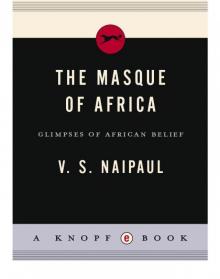 The Masque of Africa: Glimpses of African Belief
The Masque of Africa: Glimpses of African Belief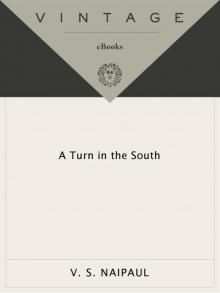 A Turn in the South
A Turn in the South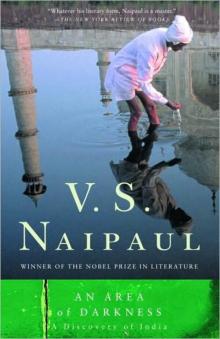 An Area of Darkness
An Area of Darkness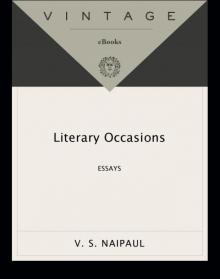 Literary Occasions: Essays
Literary Occasions: Essays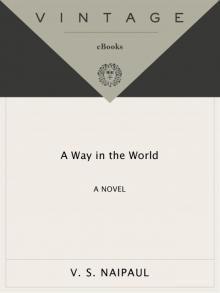 A Way in the World
A Way in the World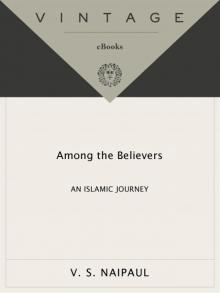 Among the Believers: An Islamic Journey
Among the Believers: An Islamic Journey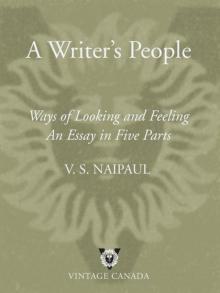 A Writer's People: Ways of Looking and Feeling
A Writer's People: Ways of Looking and Feeling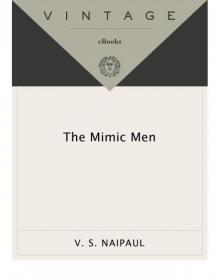 The Mimic Men: A Novel
The Mimic Men: A Novel Collected Short Fiction
Collected Short Fiction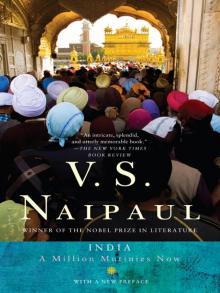 India: A Million Mutinies Now
India: A Million Mutinies Now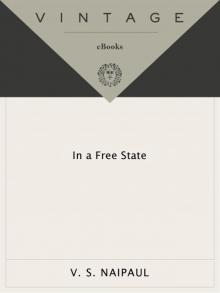 In a Free State
In a Free State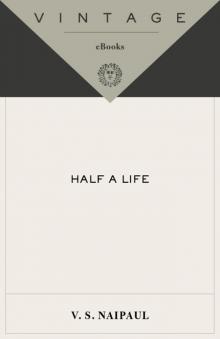 Half a Life
Half a Life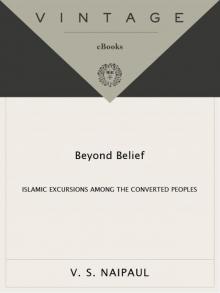 Beyond Belief: Islamic Excursions Among the Converted Peoples
Beyond Belief: Islamic Excursions Among the Converted Peoples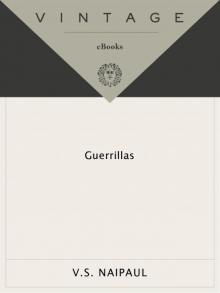 Guerrillas
Guerrillas A House for Mr. Biswas
A House for Mr. Biswas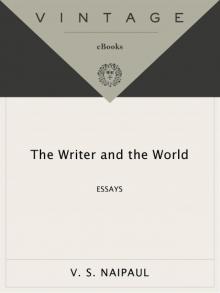 The Writer and the World: Essays
The Writer and the World: Essays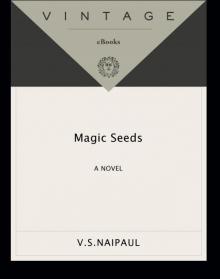 Magic Seeds
Magic Seeds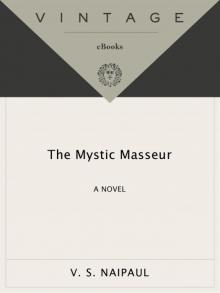 The Mystic Masseur
The Mystic Masseur Miguel Street
Miguel Street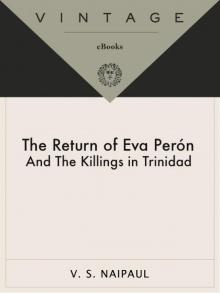 The Return of Eva Perón, With the Killings in Trinidad
The Return of Eva Perón, With the Killings in Trinidad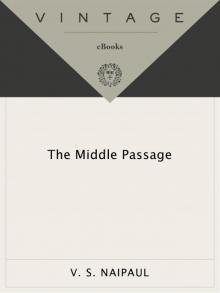 The Middle Passage
The Middle Passage A Bend in the River
A Bend in the River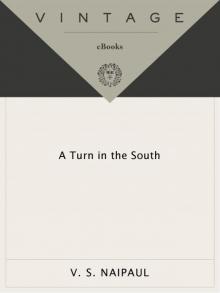 A Turn in the South (Vintage International)
A Turn in the South (Vintage International)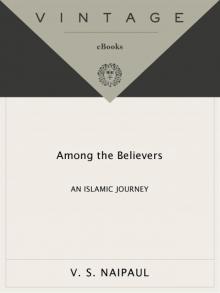 Among the Believers
Among the Believers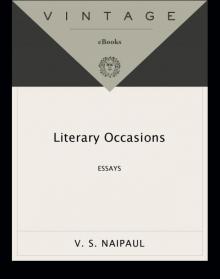 Literary Occasions
Literary Occasions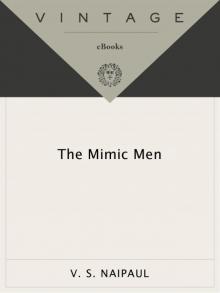 The Mimic Men
The Mimic Men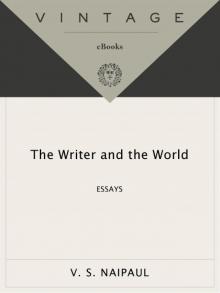 The Writer and the World
The Writer and the World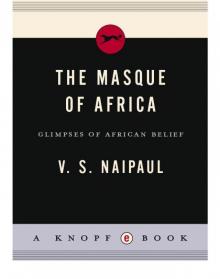 The Masque of Africa
The Masque of Africa